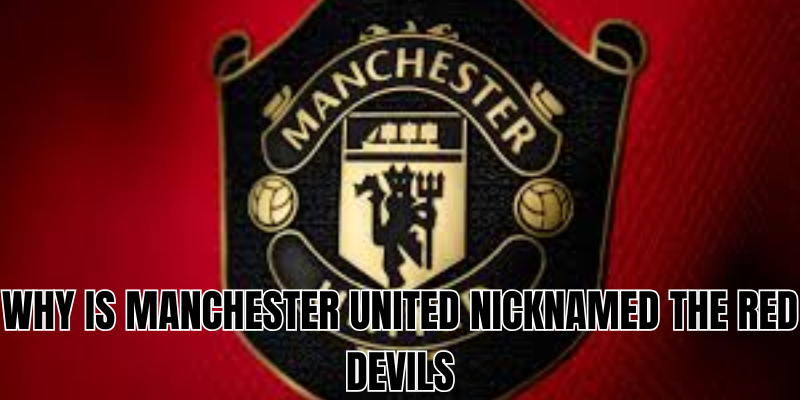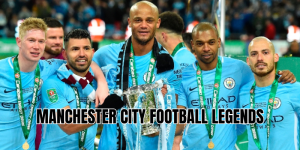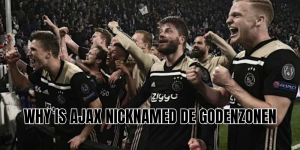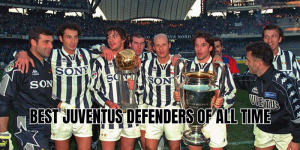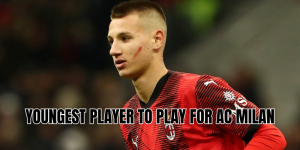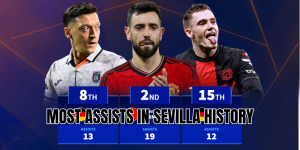Something about those three words—why is Manchester United nicknamed the Red Devils—echoes across stadiums, scarves, chants, and history books. To many fans, it just is. But peel back the layers, and you’ll find a rich tale of tragedy, reinvention, symbolism, and bold branding. In this article, AnxiScore will take you behind the scenes: from the “Busby Babes” era to the adoption of a fierce new identity that endures to this day.
Early Days: Newton Heath, the Heathens, and The Reds
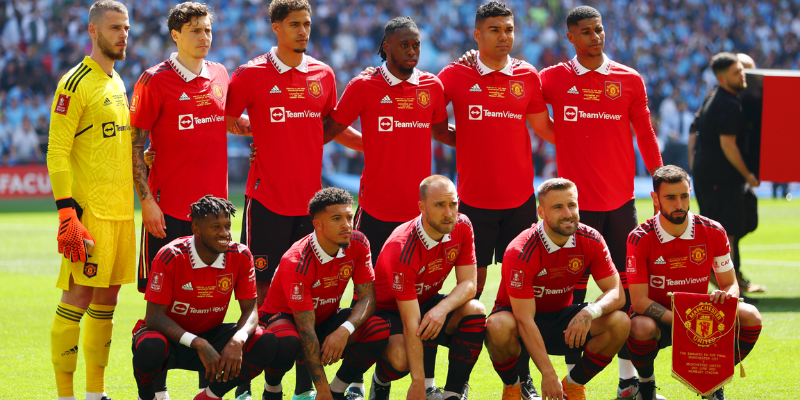
Long before “Red Devils” ever entered the lexicon, the club we know today had different names and identities. Founded in 1878 as Newton Heath LYR, the side initially wore green and gold and were sometimes dubbed “the Heathens.” Over time, the club rebranded to Manchester United (in 1902), and “The Reds” became a natural nickname simply because of their primary color.
During this phase, the identity was straightforward and tied to colors more than symbolism. But something big was on the horizon—a shift in tone and spirit that would introduce a darker, more intimidating image.
The Busby Era, Munich, and the Search for a New Identity
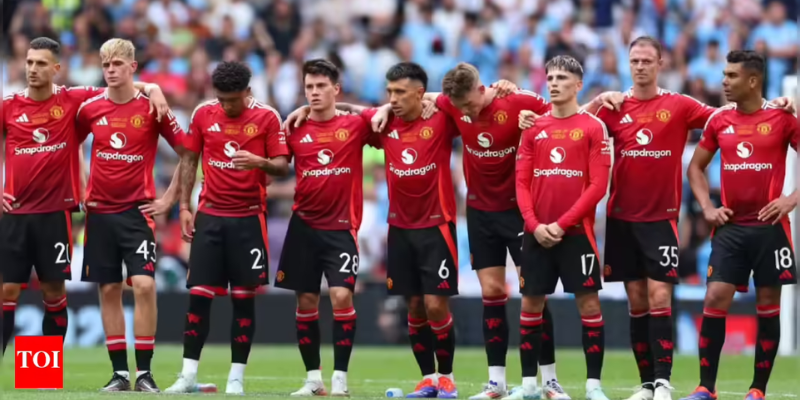
The Busby Babes & the Munich Disaster
When Sir Matt Busby took over as manager after World War II, he ushered in a youthful revolution. The side that evolved under him came to be known as the “Busby Babes” because of its reliance on young talents. Their promise and playing style captivated fans and pundits alike.
Tragically, that era’s optimism crashed into devastation in 1958 with the Munich air disaster. Manchester United lost eight players, and many others were left deeply scarred. In the wake of that calamity, the “Babes” label felt insufficient, even inappropriate. The club—still rebuilding, still mourning—needed something tougher, something that evoked power and fear.
The Shift Toward “Devils”
It was in this crucible of loss and rebirth that Busby sought a new mantle. He believed opponents shouldn’t see United as cute youngsters but as formidable warriors. His eyes landed on a nearby influence: Salford’s rugby league team.
In the 1930s, Salford had toured France and earned the nickname Les Diables Rouges, or “The Red Devils,”. He began applying it subtly to United—on match programs and scarves—over time nudging it into something official.
By the mid-1960s, “Red Devils” was regularly used by fans and media alike. In 1973, the devil icon holding a trident was formally incorporated into the club’s crest. The shift was complete: Manchester United was no longer just United, just The Reds—they were The Red Devils.
The Symbolism Behind the Name
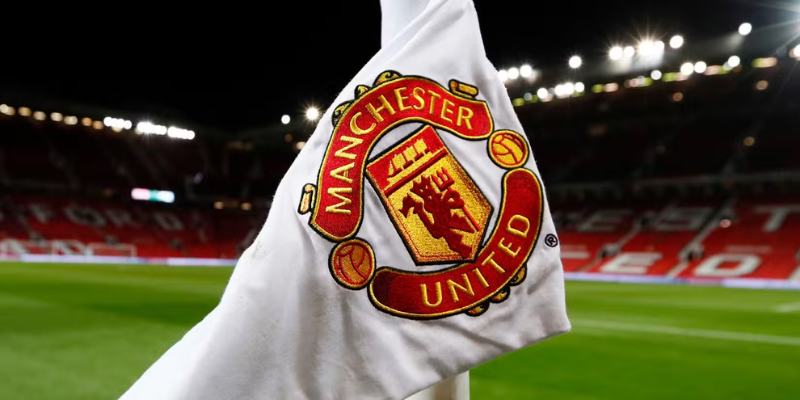
Why a devil? It’s not just theatrical flair. The devil represents defiance, aggression, and an aura of danger— what Busby wanted opposing teams to sense. It diverged sharply from more benign or flowery nicknames; this was a signal: you were dealing with a club that expected to dominate, not charm.
The color red remained central, tying into both the rugby inspiration and United’s traditional kit. But the mythical element added a psychological edge. The devil motif worked on multiple fronts:
- Intimidation factor: a subtle “we’re not your friendly rival” message
- Iconography: a visual symbol that could appear on scarves, merchandise, badges
- Evolution beyond color: it elevated the identity from “just red” to something with character
As decades passed, the symbol became deeply entrenched—not just in logos, but in stadium chants, media references, the team mascot (Fred the Red), and global brand identity.
The Rugby Link: Salford’s Legacy Lives On
No exploration would be complete without giving credit to Salford. That rugby club, based very close to Manchester, had built a distinct identity with “Red Devils.” Their adoption of that name in French rugby tours helped it stick in sporting culture. Busby didn’t invent “devils”—he borrowed, adapted, and made it his own in a football context.
The fact that Salford used red kits, had international exposure, and carried a name with bite made them the perfect muse for what United wanted to become. In short, Manchester United’s “Red Devils” roots trace directly to a cross-sport inspiration.
When Did “Red Devils” Become Official?
The transformation from nickname to institutional badge was gradual:
- 1960s: Busby begins planting the idea by using it in club programs and media
- Early 1970s: the devil motif begins appearing in the crest
- 1973: the red devil is fully integrated into the club emblem, replacing older decorative elements like rivers or stripes
- By the late 1970s, fans, media, and merchandise all uniformly used the term
This slow adoption allowed the imagery to feel organic rather than forced—a brand evolution rooted in fan adoption, not corporate decree.
Impact & Legacy: More Than Just a Name
Today, why is Manchester United nicknamed the Red Devils feels like a non-question to many—but that’s thanks to decades of symbolic reinforcement. The nickname is woven into the club’s DNA:
- Worldwide brand: a distinctive, universally recognized moniker
- Visual identity: the devil icon features on kits, merchandise, digital assets
- Fan culture: chants, banners, murals often reference devils, tridents, flames
- Mascot & symbols: Fred the Red embodies the nickname in person
Behind every chant of “Glory, Glory Man United,” there lurks that darker edge: the team you’re cheering for doesn’t just play—you bite back.
Final Thoughts
Why is Manchester United nicknamed the Red Devils? Because in the aftermath of tragedy and the ambition of a bold manager, a club reinvented itself. From the roots of Salford’s rugby legacy and Busby’s own vision, United forged an identity built on strength, edge, and mythic resonance. That name grew from whispers in programs into one of world sport’s most iconic images.
If you were fascinated by this journey—from Newton Heath to the pitchfork logo—don’t stop now. Stay tuned to AnxiScore for more deep dives into legendary clubs, player histories, tactical evolutions, and football’s hidden stories.

